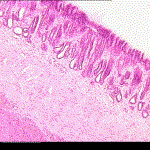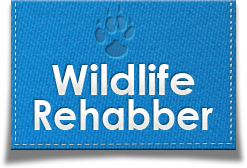Avian Nutrition
Unfortunately there is not a lot of information available regarding the nutritional requirements of wild birds. Most nutritional research has focused on species that are used as food by humans, with emphasis on chickens. Research has recently been branching out towards the nutritional needs of our companion birds. But it will be a long time before the dietary needs of several hundred different species of wild birds is researched and documented. Until then, rehabbers must drawn on the research used for poultry, the natural diets documented in life history books, and experience to formulate captive diets.
An avian diet in the wild can be broken down by the species’ “Trophic Level” (their position in the who-eats-who food chain). Their “Trophic Level” defines what their digestive system is capable of processing and deriving nutrients from.
- Carnivore (C) (nutrients derived from flesh, bones and organs of other animals)
- Piscivore (P) (nutrients derived from fish)
- Herbivore (H) (nutrients derived from live plant material)
- Omnivore (O) (herbivore and carnivore)
- Insectivore (I) (nutrients derived from insects)
- Vermivore (V) (nutrients derived from worms)
- Granivore (G) (nutrients derived from grains and seeds)
- Frugivore (F) (nutrients derived from fruits/berries)
- Molluscivore (M) (nutrients derived from mollosks, crustaceans)
- Nectivore (N) (nutrients derived from nectar)
Yes, it would be easier to classify all flesh, fish, and insect eaters as carnivores and all plant, seed and fruit eaters as herbivores but this would not meet the nutritional needs of each species. The “Trophic Level” defines the major protein source (>50%) of the bird’s total diet. The fatty acid and amino acid composition is different for each protein source. “It’s not just what you eat, it’s what you can digest and absorb that’s important.”
When providing a substitute diet, we would mimic the ratios of the protein sources. Different species have elvolved different enzymes necessary to synthesize and digest their natural diet. Provided the same diet, one bird may be able to digest and absorb only 60% of the nutrients, whereas another species may utilize up to 90% of the nutrients. Yellow-rumped warblers have evolved the appropriate enzymes necessary to digest wax and the waxy coatings of winter berries that are indigestible to other birds. Some ripe fruits contain a substance that is considered toxic to humans and mammals: Cedar Waxwings that ingested the equivalent of 5.5 times the oral lethal dose for rats in 4 hours were able completely excrete it.5
Gizzard The mechanical stomach in birds, the gizzard, varies in density which also defines the foods each bird can utilize. The function of a bird‘s gizzard is comparable to the mammal‘s use of teeth. Glands in the gizzard secrete a colloidal material that hardens to form an abrasive lining. It is also adapted to the foods eaten by each species. It’s is extremely well developed in grainivores. In fact, a turkey’s gizzard can pulverize stainless steel lancets! 3 Bird’s gizzards are adapted to the density of food that they eat and the time required to process that food. Grebes’ consume hundreds of their own feathers, constituting up to 60% of their stomach contents. It is thought that the feathers not only protect the gizzard from sharp bones but they also slow down the process of digestion, allowing time for the bones to dissolve before passing into the intestines. 3 For more information on Avian Digestion, Click Here
The mechanical stomach in birds, the gizzard, varies in density which also defines the foods each bird can utilize. The function of a bird‘s gizzard is comparable to the mammal‘s use of teeth. Glands in the gizzard secrete a colloidal material that hardens to form an abrasive lining. It is also adapted to the foods eaten by each species. It’s is extremely well developed in grainivores. In fact, a turkey’s gizzard can pulverize stainless steel lancets! 3 Bird’s gizzards are adapted to the density of food that they eat and the time required to process that food. Grebes’ consume hundreds of their own feathers, constituting up to 60% of their stomach contents. It is thought that the feathers not only protect the gizzard from sharp bones but they also slow down the process of digestion, allowing time for the bones to dissolve before passing into the intestines. 3 For more information on Avian Digestion, Click Here
Energy/FatA bird will expend up to 50% of it’s daily energy reserves in foraging alone. Breeding activity increases a bird’s energy requirements by 50%. With fat reserves averaging 3-5% in most birds, constant foraging for food is critical. A Warbler’s fat reserves are minimal and it could not survive a day without food. Yet a Kestrel has a slightly higher fat reserve and can go without food for up to 5 days.
Premigratory HyperphagiaBirds prepare for migration by increasing their fat reserves, known as premigratory hyperphagia. This substantially increases their body weight. Short range migrants increase their body weight by 13-35%. Long range migrants add 30-50% to their body weight. Hummingbirds and some Warblers completely double their body weight in preparation. Bird losses during migration are substantial. Up to 50% of most North American land birds and 60% of waterfowl never return. Migration is a critical element that rehabilitators must consider when preparing migratory birds for release, especially releases that occur late in the season.
Vitamins/MineralsVitamin and mineral requirements also vary by species. Plumage due to carotenoids (canthaxanthin) in diet are responsible for the red coloration in House Finches and Cardinals, (astaxanthin) for Cedar Waxwings, (lutein) for chickens4. Juvenile male finches lacking coloration may be Carotenoid/Vitamin A deficient. Juvenile Mockingbirds with lameness or fractures are suspected of being Vitamin D3 deficient. Many birds that are raised on a diet deficient in Pantothenic Acid/Biotin failed to grow contour feathers on their chest and back. Passing undigested food may be linked to a Vitamin E deficiency; depigmented feathers – Vitamin B2 deficient; poor feathering – Niacin deficient; and unpigmented wing and tail feathers – Choline deficient.7 See the complete listing of Vitamin/Mineral Deficiencies and Vitamin/Mineral Sources
Amino AcidsIf the wrong type of protein is provided, then a bird may be unable to digest and absorb the essential amino acids (amino acids that are considered a dietary requirement because they are not produced by the body) . If the wrong type of diet is provided, then a bird may be unable to manufacture non-essential amino acids (those normally produced by the body). If the amino acid levels are not balanced, they can negatively affect absorption or synthesis of other amino acids. It is important to carefully balance amino acids levels, because a high dietary level of a single amino acid is more debilitating than high levels of protein. 1 Birds primarily synthesize amino acids from the L-isomer. These L-isomer amino acids are completely utilized (i.e. bioavailibility of L-Arginine is 100%, but is 0% for D-Arginine 1 ). “Although high in protein (40-75%), more importantly, the amino acid balance of insects relative to the requirements of birds probably approaches 100% digestibility.” 1 The proportion of amino acids carried in the blood cells of fowls was about 80%, a value that is much higher than that found in mammals. The mean ratio of combined total amino acid concentrations between plasma and cells was about 8-fold, again much higher than the corresponding figures in mammals.
SummaryWe do know that the majority of songbird mortalities in the wild occur during the first year of life. Compound that with an inappropriate diet, and chances of long-term survival are even more dramatically reduced. But unfortunately we can’t see the consequences of the diet we select. We can keep it alive and it appears to do well upon release. But was its stamina comparable to its wild counterparts. Was it just as alert and energetic, and physically capable of out-maneuvering it’s predators? Until more research is conducted on the nutritional needs of each species of wild bird, the only solution is to put as much effort into preparing wild avian diets as we do mammal diets.
References
1 Comparative Avian Nutrition/Kirk C. Klasing; 1998
2C. Klasing, Comparative Avian Nutrition, pp. 282-284
3 https://www.bio.gasou.edu/Bio-home/Parrish/Orn3.htm
5 THE CYANOGENIC GLYCOSIDE AMYGDALIN DOES NOT DETER CONSUMPTION OF RIPE FRUIT BY CEDAR WAXWINGS. Heather M. Struempf, Jorge E. Schondube, and Carlos Martinez del Rio; https://pica.wru.umt.edu/Auk/ABS1163.HTML#struempf.art
6 SEASONAL FRUIT PREFERENCES FOR LIPIDS AND SUGARS BY AMERICAN ROBINS. Christopher A. Lepczyk, K. Greg Murray, Kathy Winnett-Murray, Paul Bartell, Eric Geyer, and Timothey Work; https://pica.wru.umt.edu/Auk/ABS1173.HTML#lepczyk.art
7 https://www.parrotsociety.org.au/articles/art_021.htm;by Dr Adrian Gallagher
8 https://www.pubnix.net/~mhagen/docu/nut_trends_phy.html; Mark Hagen, M.Ag. Director of Research, Rolf C. Hagen, Inc
9 https://www.parrotsociety.org.au/articles/art_021.htm
10 https://biodidac.bio.uottawa.ca/Thumbnails/19-87-GIF.htm
15Garcia FJ, Pons A, Alemany M, Palou A. (1986) Sex differences in blood amino acid concentration and cell/plasma distribution in the domestic fowl. Br Poult Sci 1986 Sep;27(3):379-84





